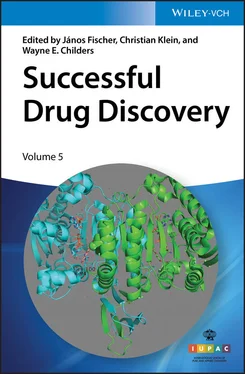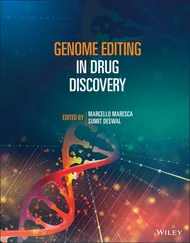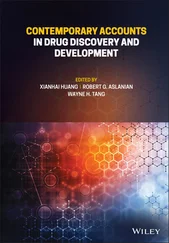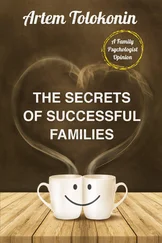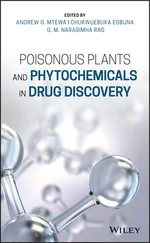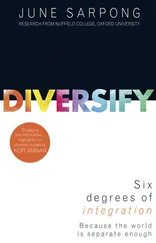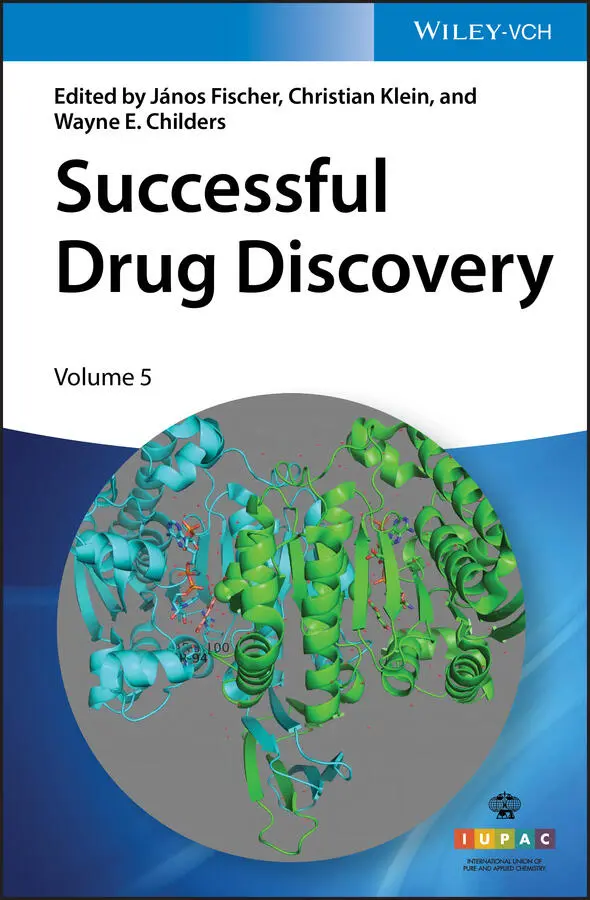
1 Cover
2 Title Page Successful Drug Discovery Volume 5 Edited by János Fischer Christian Klein Wayne E. Childers
3 Copyright
4 Advisory Board Members
5 Preface
6 Part I: General Aspects 1 Drug Discovery in Academia 1.1 Introduction 1.2 Repurposing Drugs 1.3 Pregabalin 1.4 Natural Product‐Derived Drug Discovery 1.5 Biologic Drugs 1.6 Conceptionally New Small Molecule Drugs 1.7 Sweet Spot for Academic Drug Discovery List of Abbreviations References Biography 2 From Degraders to Molecular Glues: New Ways of Breaking Down Disease‐Associated Proteins 2.1 Introduction 2.2 Definition and Historical Development of Degraders 2.3 The Ubiquitin–Proteasome System and Considerations of E3 Ligases 2.4 General Design Aspects 2.5 Differentiation of the Degrader Technology to Traditional Approaches 2.6 Potential Disadvantages and Limitations of Degraders 2.7 Molecular Glue‐like Degraders and Monovalent Degraders 2.8 Future Directions (Status Q3 2020) 2.9 Summary and Conclusions Acknowledgments List of Abbreviations References Biographies
7 Part II: Drug Class Studies 3 GLP‐1 Receptor Agonists for the Treatment of Type 2 Diabetes and Obesity 3.1 Introduction 3.2 GLP‐1 Biology 3.3 Ex4‐Based Analogues 3.4 GLP‐1 Based Analogues 3.5 Co‐agonists 3.6 Summary List of Abbreviations References Biographies 4 Recent Advances on SGLT2 Inhibitors: Synthetic Approaches, Therapeutic Benefits, and Adverse Events 4.1 Introduction 4.2 The Mechanism of Action of SGLT2 Inhibitors 4.3 Synthetic Approaches to Gliflozins 4.4 Clinical Benefits of SGLT2 Inhibitors 4.5 Safety Profile and Particularly Relevant Adverse Events Associated with SGLT2 Inhibitors 4.6 Application of SGLT2 Inhibitors in Type 1 Diabetes 4.7 Conclusions Acknowledgments References Biographies 5 CAR T Cells: A Novel Biological Drug Class 5.1 Introduction 5.2 A Brief History of Cell‐Based Therapies 5.3 Genetically Engineered T Cell Therapy Products 5.4 CAR T Cells: The Living Drug 5.5 Translation from Laboratory Innovation to Approved Therapy 5.6 Future Directions and CAR T Programs to Consider 5.7 Additional Resources for Supplementary Information on Cellular Therapies, Including Regulations, Notifications, and Guidelines References Biographies 6 CGRP Inhibitors for the Treatment of Migraine 6.1 Introduction 6.2 The Overall Physiological Role of CGRP 6.3 The Role of CGRP in the Gut 6.4 What Is the Role of CGRP in Migraine? 6.5 Role of CGRP Antagonists in Other Indications 6.6 Conclusions List of Abbreviations References Biographies
8 Part III: Case Studies 7 Discovery and Development of Emicizumab (HEMLIBRA ®): A Humanized Bispecific Antibody to Coagulation Factors IXa and X with a Factor VIII Cofactor Activity 7.1 Introduction 7.2 Preclinical Experience with Emicizumab 7.3 Clinical Experience with Emicizumab 7.4 Conclusions Acknowledgments Conflict of Interests References Biographies 8 Discovery and Development of Ivosidenib (AG‐120: TIBSOVO ®) 8.1 Introduction 8.2 Crystal Structure of IDH1 8.3 Search for mIDH1 Inhibitors 8.4 Hit to Lead Exploration 8.5 Lead Optimization: Discovery of AG‐120 8.6 Synthesis of AG‐120 8.7 Preclinical Characterization of AG‐120 8.8 Ivosidenib Clinical Studies 8.9 Conclusions References Biographies 9 The Discovery of Kisqali ®(Ribociclib): A CDK4/6 Inhibitor for the Treatment of HR+/HER2− Advanced Breast Cancer 9.1 Disease Background 9.2 Target Background and Validation: The Cell Cycle 9.3 Commencement of Drug Discovery Efforts 9.4 Fragment‐based Approach 9.5 Cross‐Screening of Existing Kinase Assets Leading to Ribociclib 9.6 Combination Treatments with Ribociclib 9.7 Early‐Phase Clinical Studies 9.8 Phase 3 Clinical Studies 9.9 Conclusions Acknowledgments References Biographies
9 Index
10 End User License Agreement
1 Chapter 2 Table 2.1 Selected examples of different target types that have been successf...
2 Chapter 4Table 4.1 Summary of the first results of randomized controlled trials testin...
3 Chapter 5Table 5.1 Ongoing CAR T cell clinical trials.
4 Chapter 6Table 6.1 Summary of CGRP/CGRP‐R mABs.
5 Chapter 7Table 7.1 Annualized bleeding rates for bleeding events treated with coagulat...
6 Chapter 8Table 8.1 R 1Initial SAR based on the enzymatic activity of derivatives of 2,Table 8.2 R 2Initial SAR based on the enzymatic activity of derivatives of N ‐...Table 8.3 R 3initial SAR based on the enzymatic activity of the phenyl‐glycin...Table 8.4 R 4Initial SAR based on the enzymatic activity of derivatives of 2,Table 8.5 Cell potency of selected potent N ‐phenyl glycine analogues.Table 8.6 Second round SAR optimization: enzymatic activity, cellular potency...Table 8.7 Reduction of hPXR activation leading to AG‐120.Table 8.8 Biochemical and Cellular Profiling of AG‐120.Table 8.9 In vitro ADME and in vivo PK properties of AG‐120.
1 Chapter 1 Figure 1.1 FDA drug approvals from 1990 to 2019. Figure 1.2 S‐Lost, N‐Lost, modern agents. Figure 1.3 GABA biology. Figure 1.4 3‐Me‐GABA analogues synthesized by Andruskiewicz and Silverman. Figure 1.5 Lead structures isolated from natural sources. Figure 1.6 Camptothecin and approved derivatives. Figure 1.7 Taxol derivatives. Figure 1.8 Semisynthetic approaches to Taxol. Figure 1.9 Epothilone derivatives. Figure 1.10 Structures of halichondrin B, eribulin mesylate, and E7130. Figure 1.11 Seeberger's flow synthesis of artemisinin and artemether, essent... Figure 1.12 Epoxomicin binding to the 20S‐ribosome. Figure 1.13 From epoxomicin to carfilzomib. Figure 1.14 Structures of DMSO and hydroxamic acid derivatives leading to th... Figure 1.15 Structures of antiviral compounds developed by Hóly and De Clerc... Figure 1.16 HIV protease inhibitors. Figure 1.17 Kinase inhibitors developed by Sugen.
2 Chapter 2 Figure 2.1 Degrader‐mediated targeted protein degradation (illustrated with ... Figure 2.2 Historical development of degraders since their first report in 2... Figure 2.3 Structures of IMiDs binding to E3 ligase CRBN (for more details o... Figure 2.4 Structure of VHL‐1, an optimized binder to E3 ligase VHL. Figure 2.5 Increasing number of publications on degraders.Figure 2.6 Structures of ligands that can be used to design degraders to rec...Figure 2.7 General strategy using the Huisgen reaction for parallel synthesi...Figure 2.8 The (un)druggable genome and number of potential targets.Figure 2.9 Oversaturation of the system with degrader molecules leads to the...Figure 2.10 Crystal structures of natural product molecular glues: Calcineur...Figure 2.11 A comparison of binary versus ternary complex formation approach...Figure 2.12 MoA of (a) Thalidomide, (b) Pomalidomide and (c) Lenalidomide: C...Figure 2.13 Molecular glue‐like degraders of the next generation: (a) CC‐885...Figure 2.14 Examples of monovalent degraders, degradation tails if identifie...
3 Chapter 3Figure 3.1 Human proglucagon (as encoded on complementary DNA). GRPP, glicen...Figure 3.2 Peptide sequence of GLP‐1 (1‐37), GLP‐1 (7‐37), GLP‐1 (7‐36)‐amid...Figure 3.3 (a) Cryo EM structure of GLP‐1R in complex with GLP‐1 and the sig...Figure 3.4 Timeline for GLP‐1 discovery and compounds approved by the Americ...Figure 3.5 The primary structure of human GLP‐1 and Ex4.Figure 3.6 The primary structure of lixisenatide.Figure 3.7 Schematic representation of the structure of efpeglenatide [30]....Figure 3.8 Schematic representation of pegylated loxenatide: mPEG, methoxy p...Figure 3.9 The structure of liraglutide.Figure 3.10 The structure of semaglutide.Figure 3.11 The primary structure of taspoglutide.Figure 3.12 Schematic representation of albiglutide.Figure 3.13 Schematic diagram of dulaglutide. The GLP‐1 analog, linker regio...Figure 3.14 Sequence of GLP‐1, Ex4, glucagon, oxyntomodulin, GIP, NNC0090‐27...Figure 3.15 Lead structure of 11‐mer GLP‐1R agonists from Bristol‐Myers Squi...
Читать дальше
